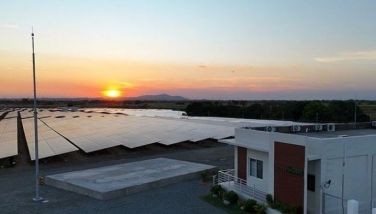Revisiting the revolution
Two small Philippine flags planted on a neighbor's flowerpot reminded me that June 12 was Independence Day. If not for those flags, I would have forgotten that Saturday marked a national holiday. Moving its official celebration to June 14 must have contributed to my forgetting about it. Everything about June 12 felt like a normal working day, not a day that supposedly commemorates an important day in Philippine history.
What exactly does June 12 celebrate, anyway? The website of the National Historical Institute says nothing about the day and only warns that the Philippine flag should be displayed properly. A Wikipedia entry states that it marks the day that Gen. Emilio Aguinaldo and his followers read the Act of Declaration of Independence against Spain and unfurled the Philippine flag in what is now Kawit, Cavite. We all know what happened after that and why, until 1964, our "other" Independence Day was celebrated on July 4.
Nobody has suggested moving Christmas to a day other than December 25. That Independence Day can be moved could suggest that President Gloria Arroyo does not believe that June 12 is as important a tradition as Christmas Day. Maybe President Arroyo would not have done that had the Philippines not been colonized by another country after 12 June 1898. Then again, had the hopes and dreams of the peasants who joined the revolution against Spain been realized, maybe we would never have elected her as President. We would probably have another form of government altogether.
Reading "The Postrevolutionary Transition in Cebu Province" by Dr. Resil Mojares is a great way to start imagining alternate realities for the Philippines. The essay is part of "Reflections on Philippine Culture and Society: Festschrift in Honor of William Henry Scott," a collection of essays edited by Dr. Jesus T. Peralta and published by the Ateneo Press in 2001.
Dr. Mojares compares the lives of Lorenzo Eje and Sergio Osmeña and their fates after the Revolution. Eje is described as one of the "generals" during the Revolution. His diary was among the "insurgent documents" captured by the Americans and deposited in the U.S. National Archives. His diary portrays him as the head of a guerilla unit that operated in the mountains between Minglanilla and Consolacion. Among his most daring exploits was leading the torching of three whorehouses frequented by American soldiers. "Today, we do not know who he was, where he came from, and what eventually happened to him," Dr. Mojares wrote. Until I read the essay, I had never heard of Eje.
We all know who Sergio Osmeña was. We can't drive around Cebu without passing a road or a building named after him. There was even a move to rename Cebu "Osmeña." What most of us do not know is that in an article he wrote for El Comercio, a Manila newspaper (17 December 1896), he described Luzon revolutionaries fighting against Spain as "ungrateful sons who spread havoc and grief along their way" and called on the Spanish authorities to "annihilate the bastards." Osmeña was an aide of the Spanish politicomilitary governor in Cebu and had to flee the city during the 3 April 1898 anti-Spanish uprising (the event that gave "Tres de Abril" street its name) by dressing as a woman.
Dr. Mojares wrote: "In prewar Cebuano newspapers, Sergio Osmeña was often depicted in editorial cartoons as a woman dressed in baro't saya, a reference, it is said, to that Tres de Abril episode when he ran away from the Revolution. In time, however, the symbol ceased to mean anything."
Only very few people objected to moving the celebration of Independence Day from June 12 to June 14. Maybe in time we will forget what June 12 symbolizes. Hopefully, it will be because we will have happier things to remember and not because we do not see the connection between our past and our present.
* * *
Email: lkemalilong@yahoo.com
- Latest
- Trending




















